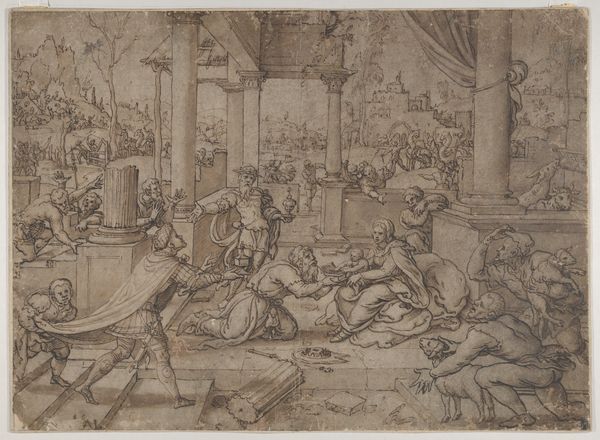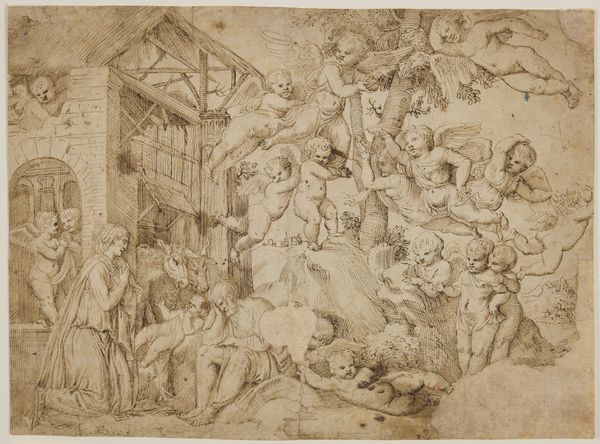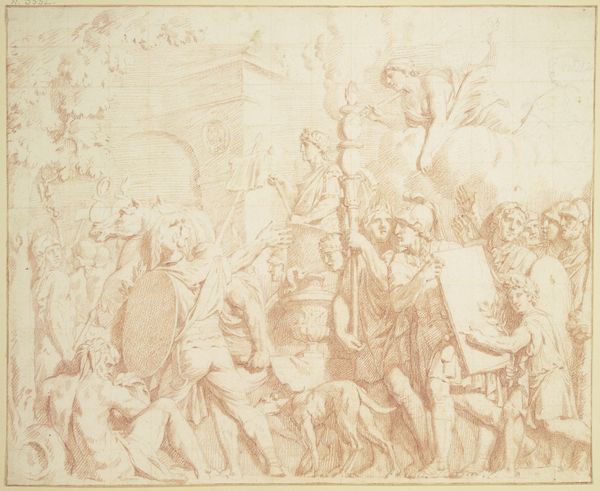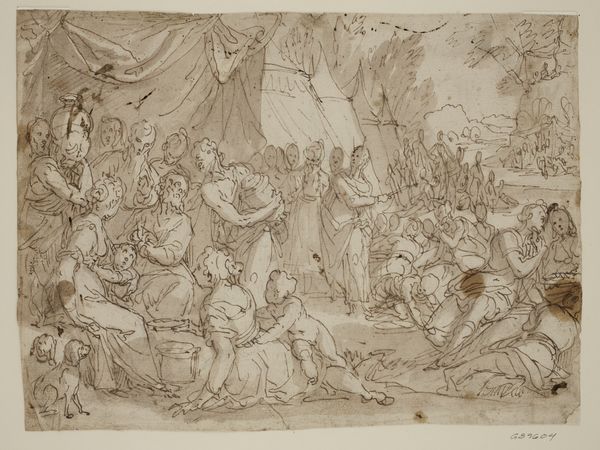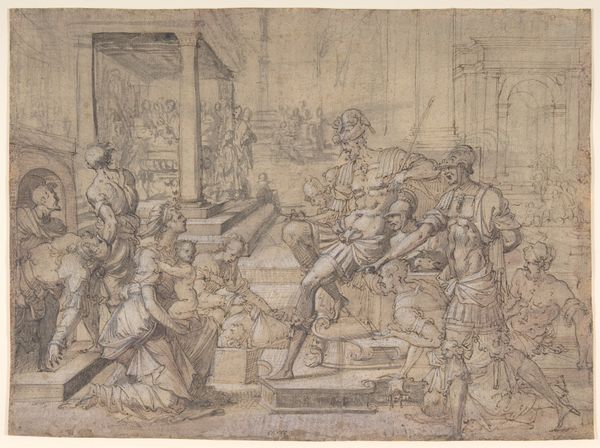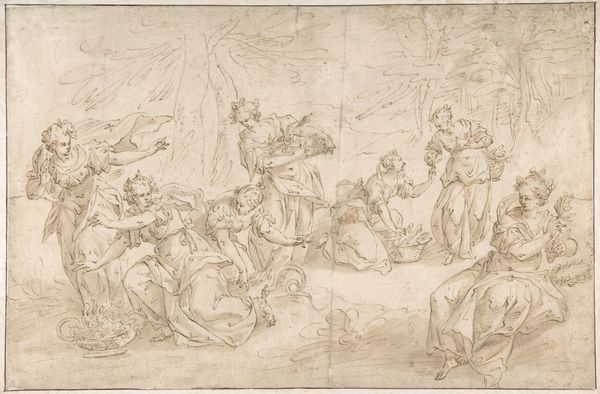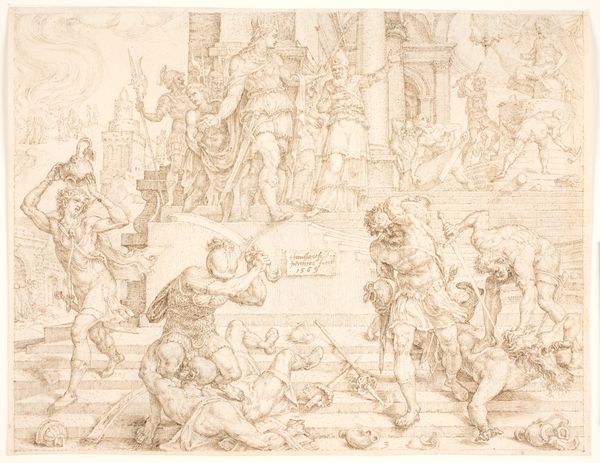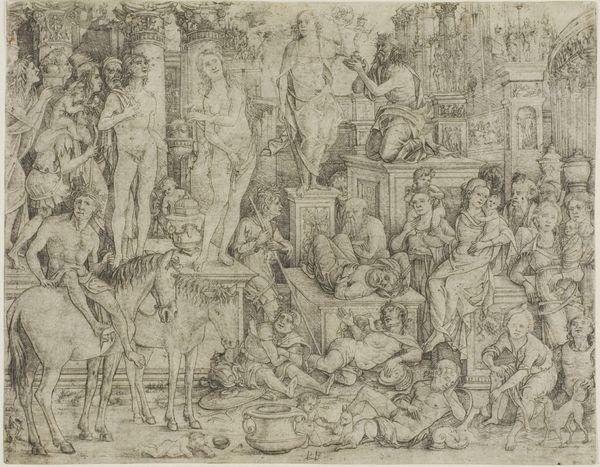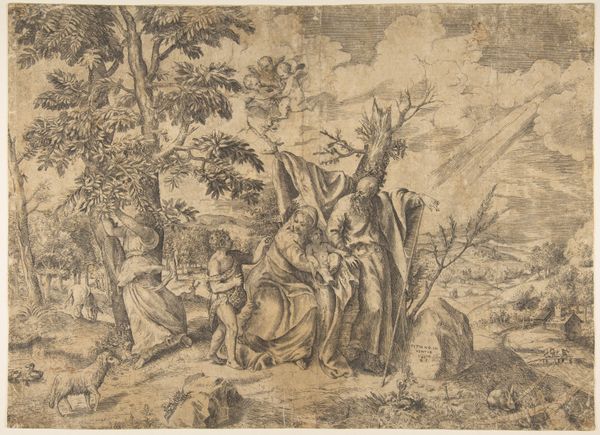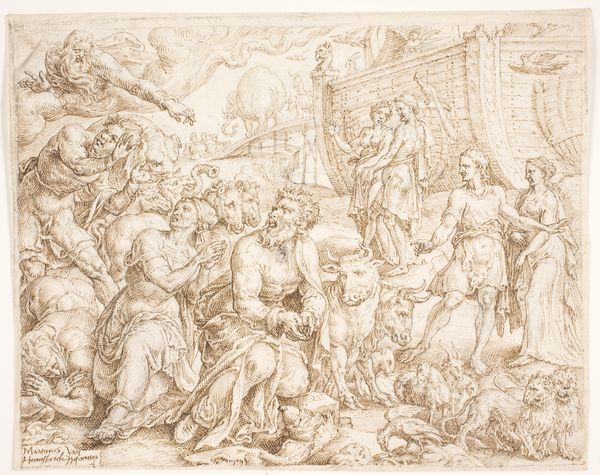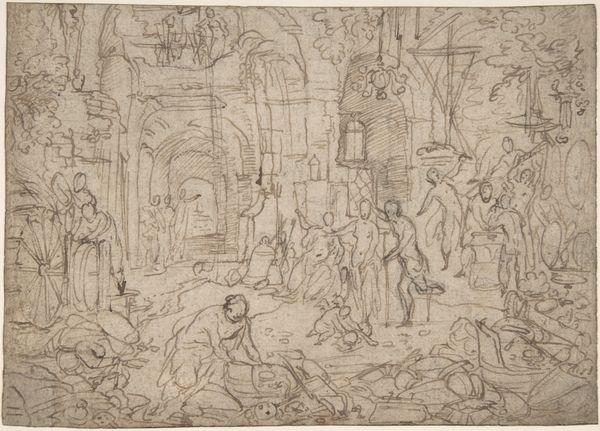
drawing, ink
#
drawing
#
baroque
#
figuration
#
ink
#
history-painting
#
nude
Dimensions: 8 5/8 x 11 3/4 in. (21.9 x 29.9 cm)
Copyright: Public Domain
Curator: Jean-Baptiste Corneille's pen and brown ink drawing, “The Nurture of Jupiter,” likely created between 1660 and 1695, presents a captivating scene. It currently resides at the Metropolitan Museum of Art. Editor: My immediate reaction is that it’s a swirl of activity, a little chaotic. Lots of figures crammed into the space. It feels unfinished, raw somehow. Is that just the nature of a drawing? Curator: Well, consider the baroque period, known for its drama and dynamism. Corneille probably intended this not as a finished work, but as a preparatory sketch. We need to see it in the context of how art was made then, not just how it looks to us today. Draftsmanship, like we see in this detailed drawing, was highly valued and central to academic training at the time. Editor: You're right, seeing it as a step in a longer artistic process reframes it. The nurturing scene becomes really apparent now; the attention seems focused on infancy and feeding. Who is being nurtured and what does it signify? Curator: Precisely. In Greek mythology, Jupiter was hidden from his father Cronus, who devoured his children to prevent being overthrown. He was raised in secrecy and protected. The narrative here showcases not just maternal care but the subversion of patriarchal authority. Look at the pastoral setting – its suggestion of the power dynamics in play. Editor: I notice how the women surrounding the child are given a lot of space, physically dominating that central area of the drawing. So the work visually suggests alternative sources of authority outside of the established patriarchal one. Even those figures in the background seem to be participating in Jupiter's nurturing. Curator: That's astute. The landscape and figures are composed to show alternative sources of power outside patriarchal structure and their vital, active role. A seemingly minor sketch thus reveals profound socio-political implications about power, lineage, and nurture, echoing themes prominent in grand baroque history painting. Editor: Looking at it this way makes me think differently about unfinished art in general. Rather than incomplete, we might see it as potential: as something whose meanings are still actively forming, or that challenges how hierarchies are represented in finished works. Curator: Precisely! Viewing “The Nurture of Jupiter” reveals that even preliminary sketches offer profound insights into the artistic, social, and political concerns of their time.
Comments
No comments
Be the first to comment and join the conversation on the ultimate creative platform.
